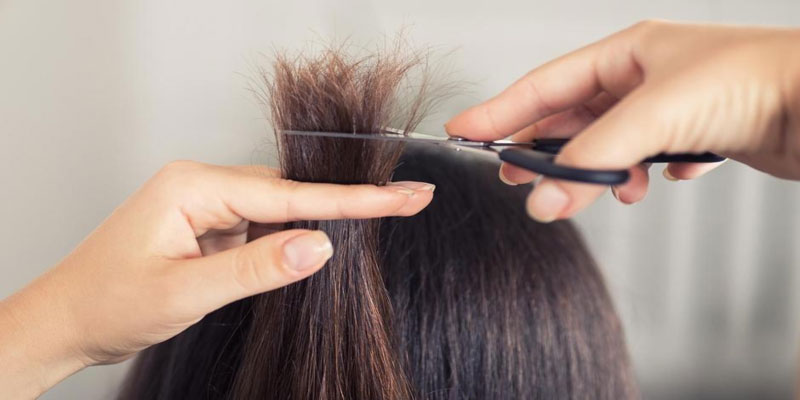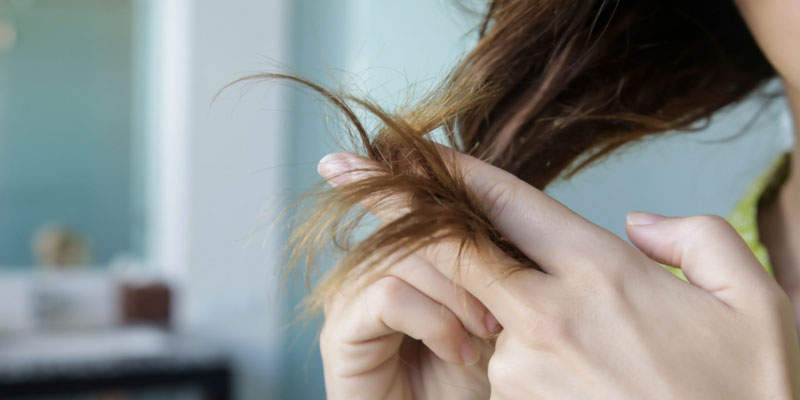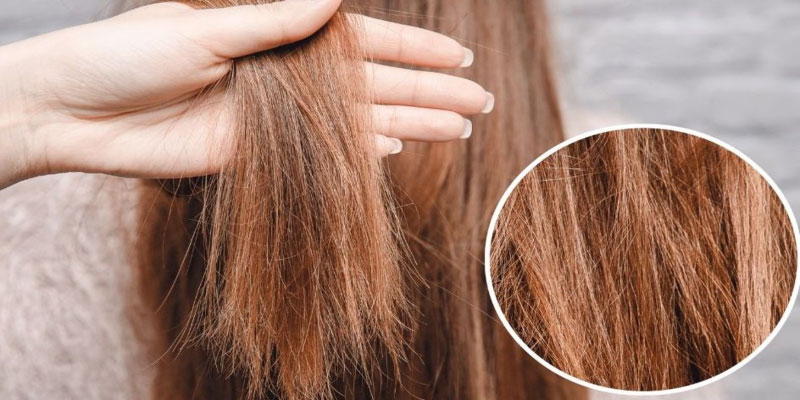Stress, heat, underlying illnesses, and other factors can all contribute to hair breaking. Find out why your hair keeps breaking and what you can do about it. There are several factors that might lead to hair breaking.
Inner cuticle scales that overlap and secure your hair strands are essential to hair health. Hair damage occurs when the scales protecting the hair dry up and split away. Frizz and dryness are only two of the side effects of this condition that contribute to breaking.
Diet

The adage "you are what you eat" couldn't be more true regarding your hair and skin. It has been scientifically shown that some nutrients promote hair growth and protect it from harm. Consume enough amounts of zinc, iron, and folic acid regularly. Getting enough protein and antioxidants helps you maintain healthy hair. It's been shown that some vitamins can promote hair development as well.
Stress
Several studies have found a correlation between stress and balding, and it's generally accepted that stress causes hair to become more brittle and more prone to breaking. Most cases of alopecia are telogen effluvium, a kind of alopecia that can be brought on by stress and is then connected to hair destruction. Because your follicles rest due to this stress, growing hair may suddenly fall out. The loss of your older hair may coincide with this. Maintaining a low stress level may lead to better hair health.
Dryness
One of the warning signs of impending damage and breakage is unusually dry hair. Dry weather, low humidity, and excessive heat are all potential contributors. Wash your hair in warm water, not hot, as the latter might cause even more dryness.
You may want to avoid washing your hair past the scalp if your ends are always dry. To avoid damaging your hair, you should never skip conditioner. Think about putting a hair mask on the middle and ends of your hair. Use leave-in conditioner to damp hair before combing it if you're short on time.
Heat Damage
High temperatures are required for effective use of styling tools including hair dryers, flat irons, and curling irons. Unfortunately, the cuticle can be damaged by these techniques if they are used improperly or frequently. Taking a break from using heat-styling equipment at least once a week might help keep your hair healthy.
Ceramic styling products are better for your hair since they heat up more evenly and you can avoid overworking the same portions of hair over and again. Using heat to your hair without first protecting it might cause damage. Protect yourself from the heat with a spray.
Over-Processing
With just one or two treatments, your hair might look and feel better after getting a perm, relaxer, professional straightening, or dyed. But, if you have these procedures too frequently, the cuticle may break down, and your hair will get damaged.
The interaction between the hair colour and the scalp might also trigger contact dermatitis. The American Academy of Dermatology suggests a gap of at least ten weeks between treatments if feasible. Use a hair mask in the meanwhile to keep your hair looking great for longer.
Over-Washing
Excess sebum production in the scalp is common among those with oily skin. Because of this, you might feel compelled to wash your hair more often than is necessary. Even if you have greasy hair and need to wash it every day, you shouldn't wash it more than once. On the other hand, those with excessively dry hair can benefit from a once-weekly wash.
Improper Towel Drying

It's human nature to dry off with a towel as soon as you get out of the shower. This rubbing action, however, does irreparable harm to your hair just as it is starting to grow. Apply pressure with a blotting cloth to remove excess moisture from wet hair instead of rubbing. A towel left in the hair might be used as a stopgap measure to soak up moisture while you figure out a more permanent solution.
Elastic Hair Ties
Keep your hair out of your face and out of your workout with the help of some elastic hair ties. And they may be useful when your hair isn't cooperating, or you're in a rush. Hair ties irritate the scalp and damage the hair cuticle.
When you take your hair out of a ponytail, you could even see a few strands here and there. Wearing your hair down sometimes, or adjusting your updo a little looser so it doesn't tug on your hair so much, can help.




